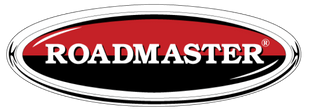ROADMASTER's computerized testing is called “FEA,” which stands for “Finite Elemental Analysis.”
If that sounds complicated, that’s because it is — FEA is the same method NASA scientists use to test their new designs. The aerospace, automotive and biomedical industries, among others, also use finite elemental analysis.
Every FEA design is displayed as a full-scale, three-dimensional object, which engineers can rotate and study on the screen as they apply thousands of pounds of force across the load-bearing components. Up to a million separate points (“elements”) can be analyzed. Stress in the steel is pinpointed and color-coded, and the design is manipulated to remove it.
The result is an optimized design, in both materials and components, which has
been tested and verified at maximum linear strain.
Every ROADMASTER tow bar and baseplate design is tested, refined and perfected through finite elemental analysis — before the first prototype is ever built. Tow bar prototypes are then further tested in “real world” fatigue tests, to the equivalent of 600,000 road miles (150,000 “push” strokes and 150,000 “pull” strokes, at full capacity).
ROADMASTER is the only towing products manufacturer to invest in the software and technology that Boeing, Lockheed Martin, GM and NASA use to ensure the integrity of their products. This allows ROADMASTER to offer the safest products possible for your family.
In the RV towing products industry, testing standards are entirely self-imposed — there are no federal regulations in place, whatsoever. ROADMASTER’s standards — “quality to ensure reliability; reliability to ensure safety” — are the highest in the industry.
